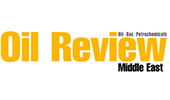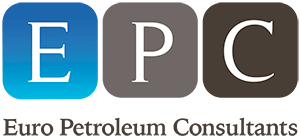Today, we see that competition in the petroleum industry keeps increasing; hence producers are focused on making sure their assets remain competitive – through new projects, revamps & expansions, implementing operational excellence programs.
The Middle East is the world’s biggest oil (and gas) producer. However, when it comes to oil refining the Middle East still remains behind some other areas around the globe – notably Asia Pacific and North America.
Indeed, despite the recent impressive growth of oil refining capacities in the region, the local refineries are presently capable of processing around 30% of the crude oil produced here. This situation is evolving at an important rate and this is best highlighted by the region’s most important producer - Saudi Arabia.
Saudi Arabia is the region’s largest oil refiner, which is not surprising given the country's leading position in the oil production market and serious investments made in the recent years. The table below taken from BP Statistics shows Saudi Arabia’s importance.
Figure 1. Refining capacities in the Middle East, thousand bpd

According to 2017 data, the country's total refining capacities exceed 2.8 MMbpd, which is about 30% of the region’s capacities. And the Kingdom is not satisfied with what has already been achieved – a number of projects are being implemented in the country aimed at the refining scope increase and depth, strengthening the integration between refining and petrochemicals.
There have been a number of important projects undertaken and in this article we will review a small number of them highlighting interesting facts and figures.
Let us start our journey with Rabigh Refining & Petrochemical Co. – a JV between Saudi Aramco and Sumitomo Chemical – and their Petro Rabigh II expansion project.
The project centers on the expansion of the existing ethane cracker, the construction of an aromatic complex and an ethylene cracker debottlenecking plant. It further enables the complex to produce 30 million cubic feet per day of ethane and three million tonnes of naphtha per year, which is used as feedstock to produce a variety of petrochemical products.
Petrochemical products slate includes ethylene propylene diene monomer (EPDM), thermoplastic polyolefin (TPO), methyl methacrylate (MMA) monomer, polymethyl methacrylate (PMMA), low density polyethylene / ethylene vinyl acetate (LDPE / EVA), cumene, phenol, superabsorbent polymer (SAP), caprolactam, nylon-6 and polyols. Some of these products manufactured for the first time in the country.
Our next stop takes us to SASREF (Saudi Aramco Shell Refinery Co) and the Jubail Refinery revamp and expansion project. The goal of the project is to attain the operating flexibility needed to generate maximum returns through sustainable fuel production, which meets Euro V regulations for lower emissions as Saudi Arabia positions itself among region’s leaders in terms of clean technology use.
The principal products manufactured at the facility include gasoline, diesel, jet fuel/kerosene, fuel oil, naphtha and liquefied petroleum gas.
In late 2017 SASREF awarded CB&I (now McDermott) a contract to provide engineering, procurement, and construction management for the modernisation and expansion of its 305,000-b/d refinery at Jubail, Saudi Arabia. Valued at more than $95 million, this latest EPCM contract follows Sasref’s previous contract awards to CB&I for conceptual design and front-end engineering and design phases of the project, the service provider said.
Staying in Jubail, but this time with SATORP and their plans for an Integrated Refining Complex. Saudi Aramco and Total recently signed an agreement to build the Jubail petrochemicals complex. The two oil giants will invest $9bln into the project. The complex will be an integrated with the Saudi Aramco Total Refining & Petrochemical Company (Satorp) facility in Jubail, a joint venture in which Aramco owns 62.5 per cent and Total 37.5 per cent.
Located next to the Satorp refinery – the complex will comprise a mixed feed steam cracker with the capacity to produce 1.5 million tonnes annually (mta) of ethylene, plus other petrochemical producing units. Front-end engineering and design activities for the project were expected to start in the third quarter of 2018. Total SA announced that the project will also produce more than 2.7 mta of high value chemicals. Feedstock will come from Satorp Refinery, and from Sadara, a joint venture between Aramco and Dow Chemical, also located in Jubail.
These announced projects as well as others are part of the Vision 2030 economic transformation program, the main goal of which is the creation of a world-leading downstream sector in Saudi Arabia, built on four key drivers:
- maximising value from the Kingdom’s crude oil production via integration across the hydrocarbon chain;
- enabling the creation of conversion industries to produce semi-finished and finished goods to help diversify the economy;
- developing advanced technologies and innovation;
- enabling sustainable development in alignment with the Kingdom’s National Transformation Program.
One of the most interesting projects is the crude oil to chemicals (COTC) complex, a joint project of Saudi Aramco and SABIC. It is expected that the complex capacity will be 400,000 bpd, and the associated product slate will include about 9 mta of chemical products and base oils. Investment in the project is estimated to reach $20bln plus and the expected start of operation is slated for 2025.
According to the latest information, the complex is expected to create an estimated 30,000 direct and indirect jobs, further stimulating the Kingdom’s economic diversification efforts. By 2030 the COTC complex is expected to have a 1.5% impact on the Kingdom’s Gross Domestic Product.
In 2018, Wood and KBR were selected to supply Project Management and Front-End Engineering services - Saudi Aramco and SABIC also announced in November 2018 that the COTC complex will be located in Yanbu, on the west coast of the Arabian Peninsula.
Today, Saudi Arabia is considered one of the world's major oil refining centers, and the implementation of the announced development projects can only further strengthen its position - with extra focus on monetisation of hydrocarbon deposits, increasing the refining ratio and enhancing integration with petrochemical plants, which is in line with the development trends of the global refining industry.
 Euro Petroleum Consultants is a technical oil and gas consultancy with offices in Dubai, London, Moscow, Sofia and Kuala Lumpur. Euro Petroleum Consultants also organises leading conferences and training courses worldwide. For further details please visit www.europetro.com.
Euro Petroleum Consultants is a technical oil and gas consultancy with offices in Dubai, London, Moscow, Sofia and Kuala Lumpur. Euro Petroleum Consultants also organises leading conferences and training courses worldwide. For further details please visit www.europetro.com.
Published by:

